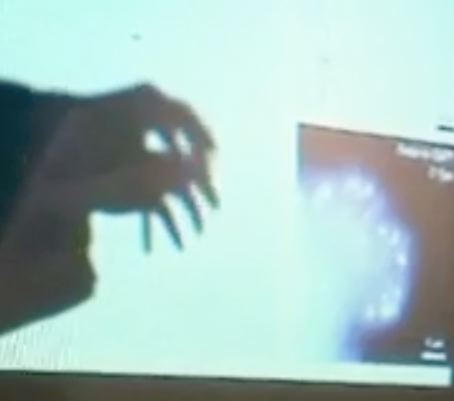Co-authored with Natasha Myers. 2011 “Haptic Creativity and the Mid-Embodiments of Experimental Life,” in Companion to the Anthropology of Bodies/Embodiment.
In this chapter, we present our collaboration working as anthropologists of experimental forms of life. We examine fieldsites where practitioners develop and use computerized visualization technologies. In the process we aim to collaborate with scientists and artists as they reflect on their practices and interpret their experiments. In addition to cell biologists, geologists, protein crystallographers and biological engineers, we have worked with PET scan brain imagers (Dumit 2004), dancers and installation artists. Here we focus on two researchers who are involved in intensive investigations with relatively new technologies. One is Dan Hijiko (pseudonym), who inquires into cell movement through live-cell imaging, and the other is Dawn Sumner, a geologist who engages her data in a 3D immersive environment known as the CAVES, for “Computerized Active Visualization Environment.”
In our work with these researchers we pay attention to how they produce, play and replay time-lapse movies and explore 3D models at different spatial and temporal scales; we keep pace with them as they keep pace with phenomena that unfold at different tempos and rhythms; and we stay with their prevarications, repetitions, and hesitations as they try on different narrative forms to render time-based events sensible. We also pay close attention to how, in their responsive experimental environments, they explore new analogies and metaphors in an often-playful manner.
 What we find in both sites are experimentalists caught up in prolonged encounters with their data, instruments and stories. They are in the midst of things: caught up in moments of not yet knowing. The relations between scientist and object loop in the form of ongoing, iterative, overlapping becomings. By beginning our accounts from inside their experiments it is possible to show how these experimentalists’ data, instru- ments, and bodies and identities are continually reconfigured within their apparatuses. We show how these researchers spend significant portions of their time figuring out what it might be possible to know in the context of their experiment. What we offer, then, is an anthropological phenomenology of those sometimes fleeting, sometimes prolonged moments that arise in the middle, mid-thought or mid-gesture. This paper thus tracks this constantly morphing tangle of bodies, instruments and objects that we call the mid-embodiments of experimental life.
What we find in both sites are experimentalists caught up in prolonged encounters with their data, instruments and stories. They are in the midst of things: caught up in moments of not yet knowing. The relations between scientist and object loop in the form of ongoing, iterative, overlapping becomings. By beginning our accounts from inside their experiments it is possible to show how these experimentalists’ data, instru- ments, and bodies and identities are continually reconfigured within their apparatuses. We show how these researchers spend significant portions of their time figuring out what it might be possible to know in the context of their experiment. What we offer, then, is an anthropological phenomenology of those sometimes fleeting, sometimes prolonged moments that arise in the middle, mid-thought or mid-gesture. This paper thus tracks this constantly morphing tangle of bodies, instruments and objects that we call the mid-embodiments of experimental life.
